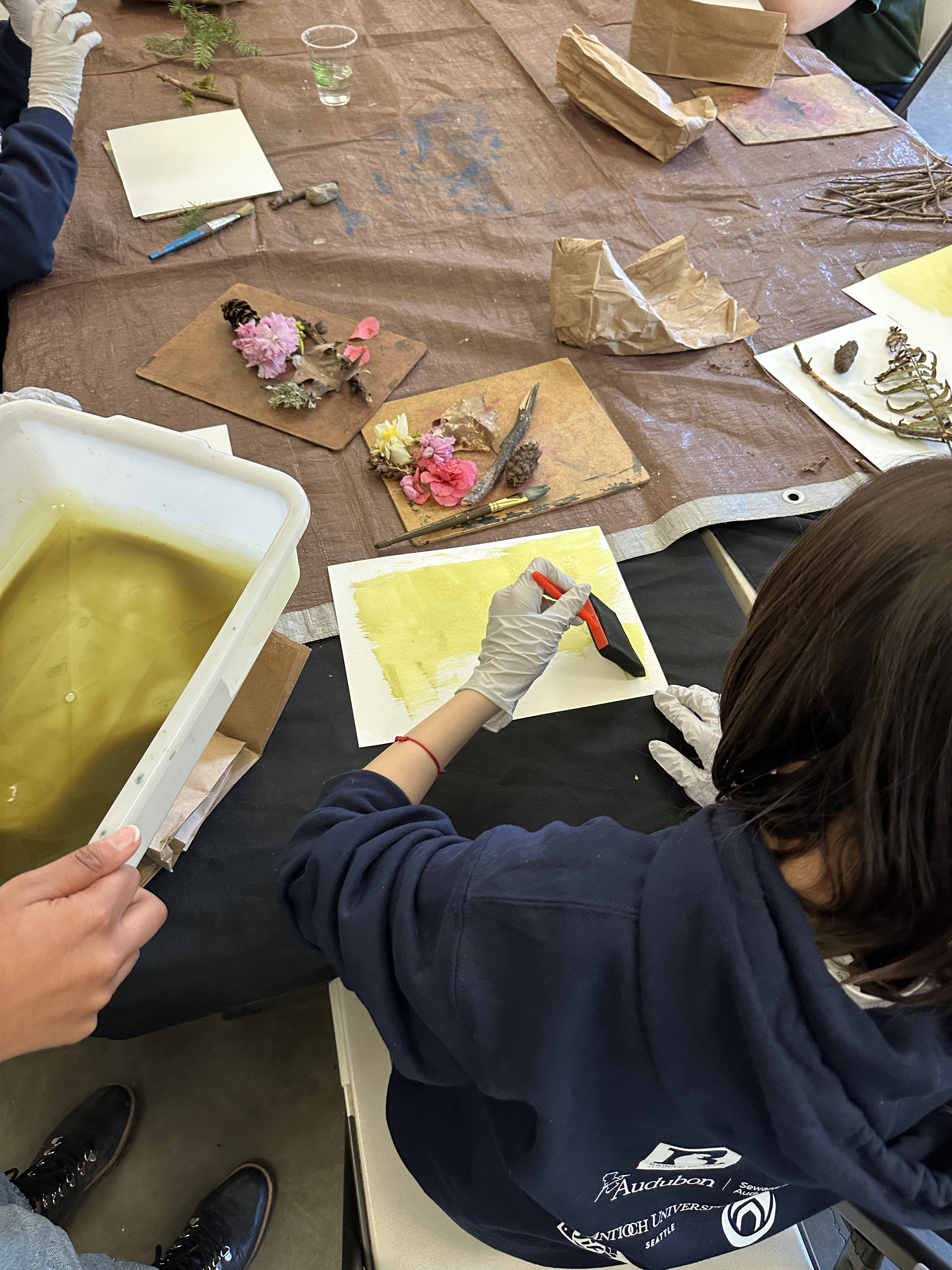 Washington Trails
Association
Washington Trails
Association
Trails for everyone, forever
Woodland Park Zoo is a leading expert in wildlife conservation and empathy-based curriculum in their education programs. The Wonder in Nature photography camp, a part of their Community Collaborative, partners with WTA through our gear lending library-- ensuring youth are comfortable outside by lending backpacks, rain gear, warm layers and hiking boots. By Erin McQuin
“For me, nature photography means capturing plants, wildlife and natural material equally, because nature cannot exist if one of those things is not there. I want my photography to make people think about how dense and alive the world around them is. I want to capture things that people wouldn’t even think to look for and would probably step over if they were hiking. I want to capture the perspective that a wild animal or a bug would see. I like close-up shots where you can see every beautiful detail of the subject.” — A youth participant in the Wonder in Nature photography camp at Woodland Park Zoo
Woodland Park Zoo is a leading expert in wildlife conservation and in using empathy-based curriculum in their education programs. Empathy for wildlife is a priority for the zoo, something they have worked to encourage locally and nationally, because if people feel empathy for wildlife and natural environments, they are more likely to protect them.
One of the ways the zoo has been building empathy since 2021 is through the Community Collaborative, which partners with South Seattle communities.

Youth in the camp explore empathy and nature through art. Photo courtesy of Community Collaborative
The Wonder in Nature photography camp, which WTA supports through our gear lending library, is one of their programs. To ensure the youth are comfortable outside during the February camp, WTA lends the youth backpacks, rain gear, warm layers and hiking boots. And instructors in the program have joined our Outdoor Leadership Training workshops.
From the beginning, the Community Collaborative has worked to build long-term, authentic relationships and create programs that respond to the priorities and interests of local communities
“Centering community voices has paved the way for the zoo to participate in equitable partnerships that reflect a shared vision,” said Melia Paguirigan of the Community Collaborative.
The camp was developed with eight community-serving organizations and has evolved to ensure an equitable partnership. The camp helps middle and high school students explore nature through the lens of photography.
Many youth who attend the photography camp have limited access to art education at school. The camp offers an outlet for self-expression while fostering an understanding of and empathy for the natural world. With the expertise of partners in the community, the camp helps students build skills and discover the potential of photography to inspire social and environmental change.
“Empathy is woven throughout the program, from how we interact with each other to the places we explore, the wildlife and plants we come across, the activities we do and the stories we share through photographs,” Melia said.
“Photography often forces us to slow down and observe things we may not notice on a regular basis. It encourages us to consider perspectives that may differ from our own and consider what and whose stories are being told,” she said.
During the camp, youth explore nature through the lens of their own identities, likes and cultural history. Guest speakers from environmental and art organizations visit to talk to the youth.
Victoria Obermeyer, a videographer and executive producer for the documentary “Coextinction,” who now works at WTA, was one of those speakers. She spoke about the power of storytelling to make positive changes for the planet.
“It was an incredible experience, not only to meet so many excited, passionate young people, but to see them make their own connections to nature through their work and expand the possibilities for their future careers,” Victoria said.
Camp participants explore Seward Park with WTA’s backpacks to hold their gear and supplies. Photo courtesy of Community Collaborative
The camp takes field trips to Seward Park and locations in South Seattle like Othello Playground and Martha Washington Park.
At the end of the camp, the high school students curate photo gallery exhibits and the middle school students design a magazine layout for their photos. Everyone writes artist statements to share their personal story and relationship to nature.
“I loved seeing them create these stunning displays and tell their own really powerful stories,” Victoria said. “A picture is worth a thousand words. There are so many emotions that can be explained more succinctly, and often more powerfully, when using visual storytelling techniques like photo or video. I think wildlife and nature are especially powerful when seen with your own eyes. It gives the viewer so much more power in deciding what they want to take away from the story.”
The work of the Collaborative to create a culturally responsive curriculum has led to changes in other programs at Woodland Park Zoo. For example, thanks to feedback from the Cham Muslim community, prayer accommodations are now available for zoo programs.
Building trust has been a cornerstone of the Community Collaborative’s success, which makes it easier for them to do their work and to support their partners.
“When we first started this work, the zoo did not have a strong presence in South Seattle; now our many partners consider us trusted neighbors and members of the community,” Melia said.
The Community Collaborative, which was formerly known as the Empathy Collaborative, continues to be guided by the belief that empathy can drive meaningful change. The Community Collaborative has created a model for fostering connection — to one another, to nature and to the world around us.
And, importantly, this camp allows the youth to be their unique selves. As one youth participant said, “I learned how to have fun and be myself.”